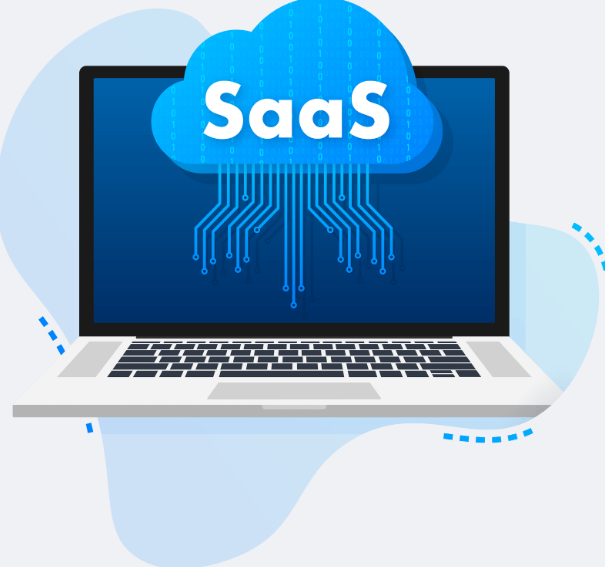Businesses today face operational inefficiencies caused by fragmented systems, siloed data, and outdated processes. Without a unified approach, organizations struggle with workflow bottlenecks, miscommunication, and declining productivity. SaaS digital transformation provides a strategic solution by centralizing business operations and optimizing efficiency.
By leveraging SaaS digital transformation, companies can integrate various business functions, ensuring seamless data flow, real-time collaboration, and automated workflows. This blog explores how organizations can transition from chaotic operations to a structured, efficient system through SaaS digital transformation.
Understanding SaaS Digital Transformation
SaaS digital transformation refers to the adoption of cloud-based software solutions that revolutionize business operations. Unlike traditional on-premise software, SaaS (Software-as-a-Service) provides flexibility, scalability, and cost-efficiency by allowing businesses to access applications over the internet without expensive infrastructure.
Through SaaS digital transformation, businesses can eliminate operational silos, enhance collaboration, and improve decision-making by centralizing data in a cloud-based ecosystem. The shift to SaaS-driven operations helps organizations remain agile, competitive, and responsive to market demands.
The Impact of Chaos in Business Operations
Without SaaS digital transformation, businesses often experience inefficiencies that lead to poor productivity and customer dissatisfaction. Operational chaos manifests in several ways:
- Fragmented workflows: Teams operate in isolated systems, leading to delays and misalignment.
- Inconsistent data: Without a centralized database, businesses struggle with outdated or inaccurate information.
- Communication breakdowns: Lack of integration between departments slows decision-making.
- Limited scalability: Legacy systems often lack the flexibility to adapt to business growth.
By implementing SaaS digital transformation, businesses can consolidate their processes, improve workflow efficiency, and ensure better coordination across teams.
How SaaS Centralizes Business Operations
SaaS digital transformation enables businesses to integrate multiple functions into a single, unified system. This transition provides several benefits:
Improved Data Accessibility
Cloud-based SaaS digital transformation ensures that employees can access real-time data from anywhere. This accessibility enhances collaboration and allows businesses to make informed decisions without delays.
Automation of Repetitive Tasks
Through SaaS digital transformation, businesses can automate administrative tasks such as invoicing, payroll, and inventory management. This reduces human errors and allows teams to focus on strategic initiatives.
Real-Time Collaboration
SaaS platforms centralize communication and project management, enabling seamless coordination between departments. With features like shared dashboards, instant messaging, and real-time reporting, SaaS digital transformation eliminates inefficiencies in team collaboration.
Scalability and Flexibility
Unlike traditional IT infrastructure, SaaS digital transformation provides scalable solutions that grow with business needs. Companies can add or remove users, expand storage, and integrate new functionalities without significant investment.
By leveraging SaaS digital transformation, businesses can streamline operations, increase agility, and enhance overall productivity.
Key SaaS Tools for Business Centralization
Several SaaS digital transformation tools help businesses unify their operations:
Enterprise Resource Planning (ERP)
ERP systems centralize business functions such as finance, HR, and supply chain management. With SaaS digital transformation, companies can leverage cloud-based ERPs like SAP or NetSuite for improved efficiency.
Customer Relationship Management (CRM)
CRMs like Salesforce and HubSpot help businesses manage customer interactions, automate marketing, and enhance sales processes. SaaS digital transformation ensures seamless integration across customer touchpoints.
Project Management Software
Tools like Asana and Trello improve workflow tracking and team collaboration. By implementing SaaS digital transformation, businesses can streamline project execution and track progress in real-time.
Human Resource Management Systems (HRMS)
HRMS platforms like BambooHR centralize employee management, payroll, and performance tracking. SaaS digital transformation optimizes workforce management for better productivity.
Accounting and Finance Software
Solutions like QuickBooks and Xero simplify financial management, ensuring accurate bookkeeping and automated invoicing. SaaS digital transformation enhances financial transparency and decision-making.
By adopting these SaaS digital transformation tools, businesses can eliminate operational silos and achieve seamless workflow integration.
Steps to Implement SaaS Digital Transformation
For a successful SaaS digital transformation, businesses should follow these key steps:
Assess Business Needs
Identify inefficiencies, workflow bottlenecks, and areas requiring improvement. A clear understanding of operational gaps ensures a strategic approach to SaaS digital transformation.
Choose the Right SaaS Solutions
Evaluate SaaS platforms based on features, cost, scalability, and integration capabilities. Selecting the right solutions is crucial for maximizing the benefits of SaaS digital transformation.
Develop a Transition Strategy
Create a roadmap for implementation, including timelines, budget considerations, and phased adoption plans. A structured approach ensures a smooth SaaS digital transformation process.
Employee Training and Adoption
Educating employees on new tools is essential for successful SaaS digital transformation. Conduct training sessions to ensure teams understand the software and its benefits.
Monitor Performance and Optimize
Track key performance indicators (KPIs) to measure the impact of SaaS digital transformation. Regular assessment and optimization help refine operations for continuous improvement.
By following these steps, businesses can transition seamlessly to SaaS digital transformation and maximize operational efficiency.
Overcoming Common Challenges in SaaS Adoption
Despite its benefits, SaaS digital transformation comes with challenges:
- Data Security Concerns: Businesses must implement robust cybersecurity measures to protect sensitive information.
- Resistance to Change: Employee training and leadership support are crucial for successful adoption.
- Integration Issues: Selecting compatible SaaS solutions prevents integration difficulties with existing systems.
- Cost Considerations: While SaaS reduces IT expenses, businesses should evaluate long-term ROI for sustainable investment.
By proactively addressing these challenges, businesses can ensure a smooth SaaS digital transformation journey.
Future Trends in SaaS Digital Transformation
SaaS digital transformation continues to evolve with emerging technologies:
- AI-Powered Automation: AI-driven SaaS tools improve workflow automation and predictive analytics.
- Low-Code/No-Code Platforms: These enable businesses to develop applications without extensive coding knowledge.
- Advanced Data Analytics: Cloud-based analytics provide real-time business intelligence for data-driven decision-making.
As SaaS digital transformation advances, businesses must stay informed about trends to maintain a competitive edge.
Takeaway
Centralizing operations through SaaS digital transformation is essential for businesses seeking efficiency, scalability, and agility. By integrating cloud-based solutions, companies can eliminate workflow disruptions, enhance collaboration, and drive long-term growth.
For organizations still relying on outdated systems, now is the time to embrace SaaS digital transformation. Investing in the right SaaS solutions will pave the way for streamlined operations, improved customer experiences, and future-ready business strategies.







